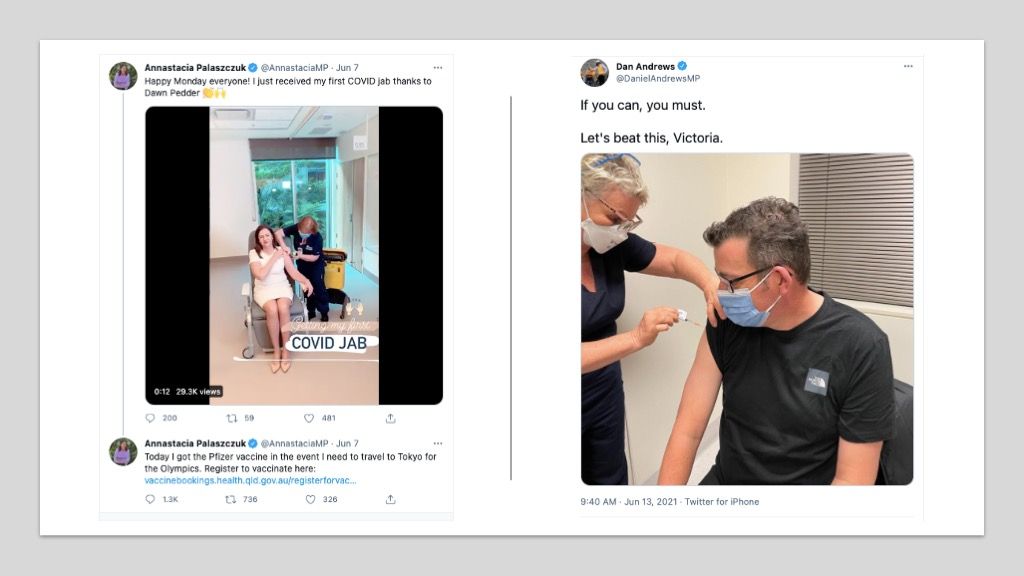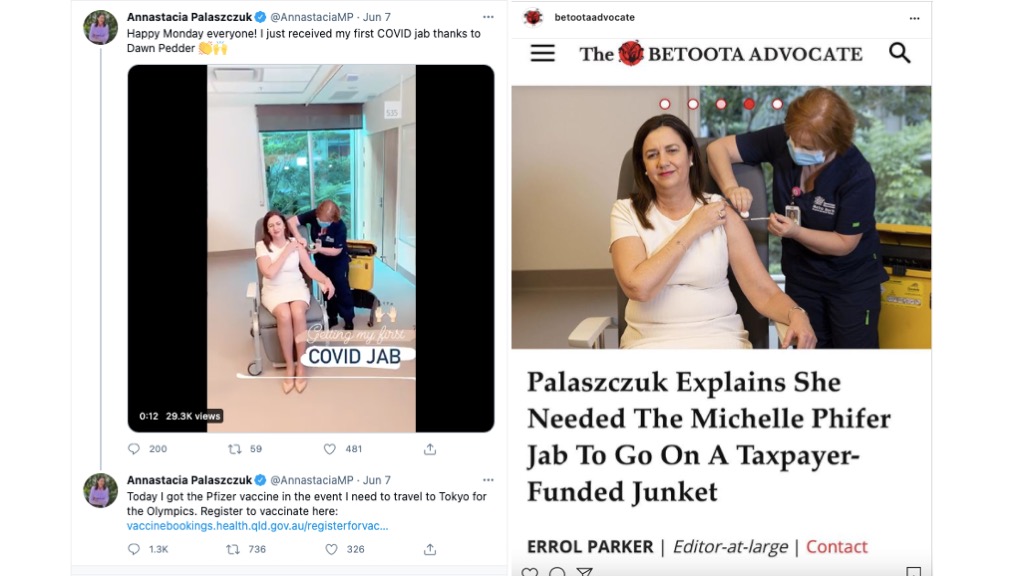
This article examines how poor choices of words from media and individuals has contributed to increased COVID-19 vaccine hesitancy in Australia, and how the Therapeutic Goods Administration is working to reverse the impact of these initial communications with new guidelines.
The Therapeutic Goods Administration (TGA) has advertising codes in place to avoid imbalanced and non-factual communications about medicines which could lead to brand loyalty and confusion from the public. Currently in Australia, there is increasing vaccine hesitancy around the COVID-19 vaccines. This is due to the daily messaging and 24/7 nature of the COVID news cycle which has quite frankly given the Australian public a lot to think about.
Using our media monitoring software Meltwater, we looked at all mentions of “vaccine(s)”, “vaccination”, “vaccinated”, etc., in Australia. The findings demonstrate just how monumental the number of social media posts and amount of media coverage on vaccines is. In the past six months:
Line graph showing the increasing volume of mentions over the past six months.
A report by the University of South Australia found that if the amount of brand naming for COVID-19 vaccines was reduced in content published by the media and on individuals’ social media, their uptake would be quicker.
Experts estimate that herd immunity requires at least 70% of a population to have immunity from COVID-19, which can only be achieved through vaccinations or having antibodies from a previous infection. Today, Australia has only fully vaccinated 2.29% of their population, and a first dose has been administered to 21.39%
In the South Australian study, interviews were conducted with 2,400 unvaccinated adults in Australia, the US and UK. Around 50% spontaneously indicated a first-choice vaccine (45% in the UK; 54% in the US; and 49% in Australia).
One of the conclusions of this report was that the government should make the available vaccines far more desirable to the public to increase people’s vaccine brand willingness. This can be achieved through positive brand associations, via positive advertising and media coverage.
People who say that they are “holding out for a specific jab”: this is none of their own fault as most probably did not know the existence of the two companies manufacturing our available COVID-19 vaccines before last year. There is no evidence this behaviour is born out of years of brand loyalty.
Download our checklist to ensure your communications on COVID-19 vaccines are TGA friendly.
From the point of view of a healthcare communications agency with many years of experience working within the TGA guidelines, the media articles, and social media posts about the two vaccines have been unusual and startling. Australia appears to have shifted in the direction of the US where pharmaceuticals are advertised as freely as a FMCG product. The TGA have now released guidelines for anyone thinking of publishing communications about COVID-19 vaccines.
Of course, the Australian public has a right to know about the side effects and clinical trial data for these vaccines. However, because of how the information has been presented and the side effects irresponsibly covered by the media, the government and health authorities have been left to battle with problematic levels of vaccine hesitancy.
So, can an individual write and publish about the COVID-19 vaccines in Australia (with a brand mention)? The TGA guidelines for COVID-19 vaccines classifies any information published by individuals which is not factual and balanced as advertising. Factual and balanced content includes scientific reports from reputable sources, retweeting or sharing valuable newsworthy information from reputable sources, presenting comprehensive information that doesn’t emphasise benefits over risks and limitations (see screenshot from the guidelines below).
So, if we take this information into account, does a tweet like the below breach the TGA guidelines?
On 30th May, the Federal Minister for Health disclosed which vaccine he was receiving on Twitter. Unfortunately, we have reached a point where positive endorsement of this specific vaccine is necessary due to the damaging media coverage it received in March and April.
This more recent tweet gathered some negative coverage (including satirical). The concern here is that by branding the vaccine, Queensland Premier Annastacia Palaszczuk could lead people in the state to expect the same vaccine for themselves.

Palaszczuk is over 50; at the time she was not in the priority group for the vaccine referred to in her tweet. This one was prioritised for people under the age of 50 under direction from the Australian Technical Advisory Group on Immunisation (ATAGI), which recently updated its advice to recommend the vaccine for over 60s only. The Premier justified the decision on the basis she needs to travel to Tokyo for the Olympics soon and did not want to jump the queue in February. The motivation probably came from the right place; however, this doesn’t answer why it was decided to identify the vaccine brand.
Given the current climate, a wiser move could have been to roll up the sleeve without brand naming.
Finally, in this tweet, the Victorian Premier did not disclose on his social media which vaccine he was receiving. If we are interpreting the TGA guidelines correctly, Dan Andrews’ post was TGA friendly.
Hindsight is a wonderful thing, but it was all too predictable that poor choices of words and headlines would lead to increased vaccine hesitancy, and this could have been avoided from the start. Amid a public health crisis, click-bait content is harmful. Hopefully with these TGA guidelines in place, important boundaries will be respected. This, coupled with the recent outbreak in Melbourne, could be an important step in boosting confidence in vaccines and lead us towards herd immunity.